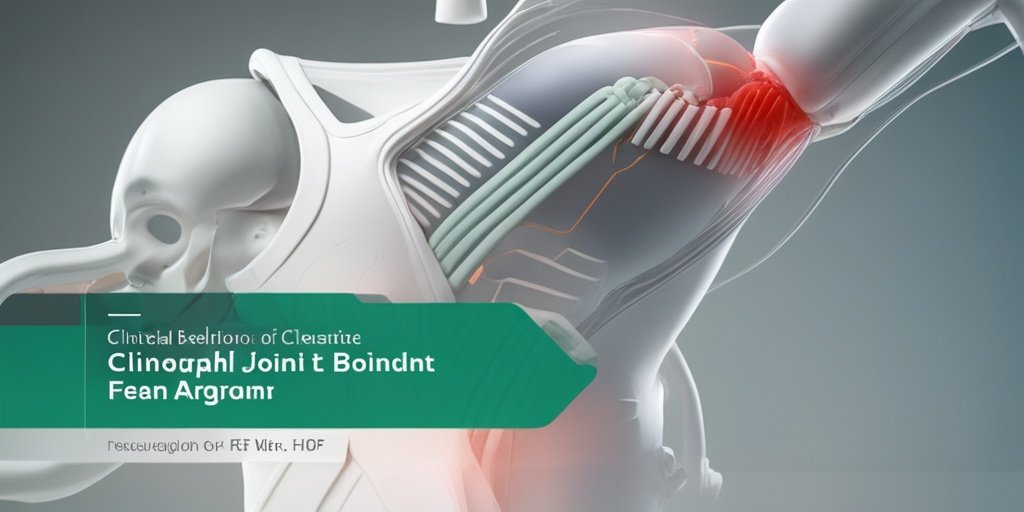⚡ Quick Summary
This study aimed to develop a machine learning (ML) probability calculator to estimate recurrence rates after arthroscopic Bankart repair (ABR). However, the findings revealed that data heterogeneity significantly limited the algorithm’s predictive capabilities, with a recurrence rate of 15.4% observed in the analyzed cohort.
🔍 Key Details
- 📊 Dataset: Data from 14 studies, totaling 5591 patients
- 🧩 Inclusion criteria: Patients treated with ABR without remplissage for traumatic anterior shoulder instability
- ⚙️ Methodology: Bivariate logistic regression and four ML algorithms developed
- 🏆 Performance metrics: Discrimination (AUC) ranged from 0.54 to 0.57
🔑 Key Takeaways
- 📉 Recurrence rate after ABR was found to be 15.4%.
- 👶 Age under 35 years and participation in contact sports increased recurrence risk.
- 🦴 Bony Bankart lesions and full-thickness rotator cuff tears were also significant risk factors.
- 🔄 A single shoulder dislocation lowered the risk of recurrence compared to multiple dislocations.
- 📉 Data exclusion due to unavailability of certain variables limited the dataset to 797 patients for algorithm creation.
- ⚠️ Heterogeneity of clinical data was a major barrier to effective prediction.
- 🔍 Need for standardized data collection methods in future studies was emphasized.
- 📅 Follow-up period was a minimum of 2 years for included studies.

📚 Background
Arthroscopic Bankart repair (ABR) is a common surgical procedure for treating traumatic anterior shoulder instability. Despite its popularity, predicting recurrence rates post-surgery remains challenging. The integration of machine learning into clinical decision-making has the potential to enhance predictive accuracy, but the effectiveness of such tools is contingent upon the quality and consistency of the underlying data.
🗒️ Study
The study involved a comprehensive analysis of data from 14 previously published studies, focusing on patients who underwent ABR without remplissage. The researchers aimed to identify risk factors associated with recurrence through bivariate logistic regression analysis and subsequently developed four ML algorithms for prediction. The study’s design emphasized the importance of long-term follow-up, with a minimum of two years required for inclusion.
📈 Results
The study included a total of 5591 patients, with a recorded recurrence rate of 15.4% (n=862). The predictive performance of the developed ML algorithms was assessed, yielding discrimination values (AUC) ranging from 0.54 to 0.57. These results indicate that the current predictors were insufficient for accurate recurrence prediction, highlighting the limitations posed by data heterogeneity.
🌍 Impact and Implications
The findings of this study underscore the challenges faced in utilizing machine learning for clinical predictions in orthopedic surgery. The inability to effectively predict recurrence rates following ABR due to data heterogeneity calls for a concerted effort towards standardized data collection methods in future research. This could pave the way for more reliable predictive tools, ultimately improving patient outcomes and surgical decision-making.
🔮 Conclusion
This study illustrates the limitations of machine learning in predicting recurrence after ABR when faced with heterogeneous clinical data. While the potential for ML in clinical applications is vast, it is crucial to address data quality and standardization issues to enhance predictive capabilities. Future research should focus on creating robust datasets that can support the development of effective clinical decision support tools.
💬 Your comments
What are your thoughts on the challenges of using machine learning in predicting surgical outcomes? We invite you to share your insights and engage in a discussion! 💬 Leave your comments below or connect with us on social media:
Methodology and development of a machine learning probability calculator: Data heterogeneity limits ability to predict recurrence after arthroscopic Bankart repair.
Abstract
PURPOSE: The aim of this study was to develop and train a machine learning (ML) algorithm to create a clinical decision support tool (i.e., ML-driven probability calculator) to be used in clinical practice to estimate recurrence rates following an arthroscopic Bankart repair (ABR).
METHODS: Data from 14 previously published studies were collected. Inclusion criteria were (1) patients treated with ABR without remplissage for traumatic anterior shoulder instability and (2) a minimum of 2 years follow-up. Risk factors associated with recurrence were identified using bivariate logistic regression analysis. Subsequently, four ML algorithms were developed and internally validated. The predictive performance was assessed using discrimination, calibration and the Brier score.
RESULTS: In total, 5591 patients underwent ABR with a recurrence rate of 15.4% (n = 862). Age <35 years, participation in contact and collision sports, bony Bankart lesions and full-thickness rotator cuff tears increased the risk of recurrence (all p < 0.05). A single shoulder dislocation (compared to multiple dislocations) lowered the risk of recurrence (p < 0.05). Due to the unavailability of certain variables in some patients, a portion of the patient data had to be excluded before pooling the data set to create the algorithm. A total of 797 patients were included providing information on risk factors associated with recurrence. The discrimination (area under the receiver operating curve) ranged between 0.54 and 0.57 for prediction of recurrence.
CONCLUSION: ML was not able to predict the recurrence following ABR with the current available predictors. Despite a global coordinated effort, the heterogeneity of clinical data limited the predictive capabilities of the algorithm, emphasizing the need for standardized data collection methods in future studies.
LEVEL OF EVIDENCE: Level IV, retrospective cohort study.
Author: [‘van Spanning SH’, ‘Verweij LPE’, ‘Hendrickx LAM’, ‘Allaart LJH’, ‘Athwal GS’, ‘Lafosse T’, ‘Lafosse L’, ‘Doornberg JN’, ‘Oosterhoff JHF’, ‘van den Bekerom MPJ’, ‘Alexander Buijze G’, ‘Machine Learning Consortium’]
Journal: Knee Surg Sports Traumatol Arthrosc
Citation: van Spanning SH, et al. Methodology and development of a machine learning probability calculator: Data heterogeneity limits ability to predict recurrence after arthroscopic Bankart repair. Methodology and development of a machine learning probability calculator: Data heterogeneity limits ability to predict recurrence after arthroscopic Bankart repair. 2024; (unknown volume):(unknown pages). doi: 10.1002/ksa.12443